Letting Go
How Collaborating with Designers Has Helped My Control Issues
My name is Lisa, and I have control issues.
Hi, Lisa.
I like the idea of being a spontaneous, fly-by-the-seat-of-my-pants kind of gal—but the reality is that it’s just not me. I like to-do lists, color-coordinated office supplies, and detailed itineraries. And when it comes to my theatre work, I am a perfectionist. There are, of course, positive things about that: I am driven, organized, and have a great work ethic. But it also means I have a hard time letting go of my grip on the creative process, especially as a director.
As an actor, I have no problem letting go. In a rehearsal process, I love to play, try new things, and explore. I trust the director’s vision and enjoy the freedom that comes with that trust. So, why is it so hard for me to trust my collaborations as a director? Perhaps it’s because I don’t have as much experience in directing as I do in acting. Or maybe it’s because there’s a lot of pressure. After all, the director oversees the whole artistic product, so there’s a lot to answer to. Or maybe it’s because I’m a perfectionist.
Earlier in my directing career, I went into the collaborative design process with a firm grip on my vision. In my first full-length show, I carefully explained to the scenic and costume designers exactly what the set and clothing should look like. And they complied, which was fine, and the designs were good—they did exactly what I asked. But I never felt quite comfortable with the way things went down.
It is not the director’s responsibility to produce results, but, rather, to create the circumstances in which something might happen.—Anne Bogart
Where I teach now, we have a strong design/tech program with dedicated and talented students and faculty. A few years ago, we reaffirmed our commitment as a faculty to make our design process the best pedagogical experience possible. This shift meant that we needed to “practice what we preach,” so to speak, when it came to design meetings. So I really needed to practice in order to practice what I preach.
A colleague encouraged me to talk to designers the way I talk to actors. OK…so…I don’t give line readings. I ask questions and provide the circumstances in which the actor can make the best choices to fulfill the overall artistic vision. I needed to trust the designers in the same way and figure out how to provide those same circumstances so that the designers can do their best work—the work they are trained to do. Who am I to assume that the idea in my head of what the show “should” look like is the best one, let alone the only one?
One of my favorite quotes about theatre comes from Anne Bogart, one artist I most admire, in her book A Director Prepares:
It is not the director’s responsibility to produce results, but, rather, to create the circumstances in which something might happen. The results come about by themselves. With one hand firmly on the specifics and one hand reaching to the unknown, you start to work.
One hand reaching to the unknown? For someone with a strong desire to control things, the “unknown” can be a scary place. But I knew I had to try.
I’m pleased to share a successful attempt to practice this new way of collaborating with designers by examining a production of You’re a Good Man, Charlie Brown. Ever since I was one of about six Lucy’s in a fourth grade production, I have loved this family-friendly-yet-not-sappy musical. In my first design meeting, I talked about the importance of the comic strip upon which the show is based. To me, the connection to the original characters was essential. I described my desire to take what was on the printed page and put it up on stage as closely as possible. I resisted the urge to explain what I meant, to clarify, to give examples. I took a deep breath and just ended the meeting.
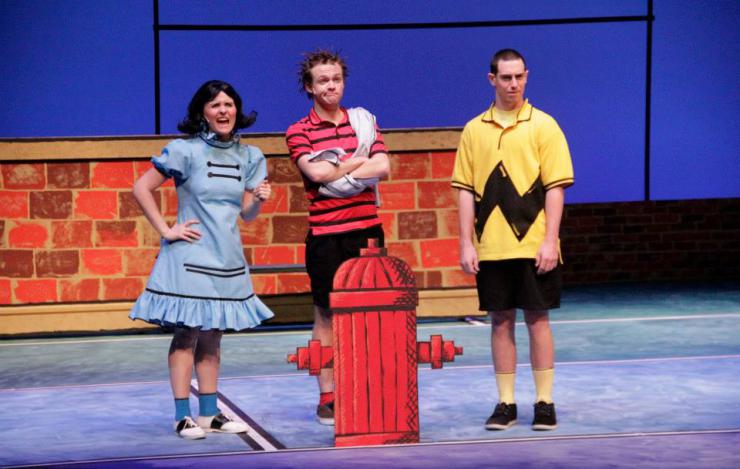
And what happened was glorious. The costume designer, Claire Abernathy, came back with ideas that absolutely blew me away. She added piping to all the edges of the costumes to mimic the line drawing. She gathered the bottom of the ladies’ dresses so much that it made them stick out like they do in the comic strip. Charlie Brown’s signature zigzag stripe was not solid black—it had little areas that were not filled in, exactly like the comic strip! She accomplished Sally’s hair, which seems to defy gravity in the comic strip, by creating adorable pigtail-like things held up internally by wire. Oversized baseball caps were used for the baseball game song. Snoopy’s ears hung down the sides of the doghouse. It was all—just—glorious.
And the scenic design—student designer Vanessa Williams also ran with the concept and came back with innovative ideas for how to create set pieces that looked two-dimensional like the comic strip. The pitcher’s mound, trees, and all the props (including 2D baseballs, birds, shooting stars, and other clever pieces; shout out to the props master Ashley Pratt) looked as if they had been lifted off the pages of Charles Schulz’s work.
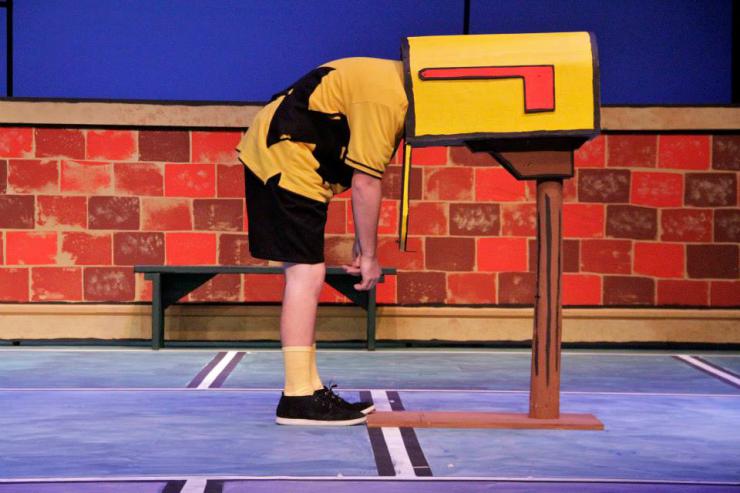
Going in to the whole process, I was straight up scared. But I challenged myself to let go of the impulse to control and trust in the collaborative process, and what resulted was a truly eye-opening and powerful experience. Ultimately, what I realized is that I wasn’t relinquishing control. Instead, I was appropriately placing it in the capable, well trained, and artistically gifted hands of the design team. They schooled me in the most wonderful way.
My eye still twitches a bit when the perfectionist monster starts crawling up from the depths of my artistic pit, whispering the uglies about how I need to hold on to the little control I have going into a process. But one hand reaching to the unknown has become a delightful, freeing experience. I still offer up a little prayer to St. Anne of the Bogart, asking for her guidance to allow myself to indulge in and enjoy the freedom of trusting the collaboration.
God, grant me the serenity. Amen.
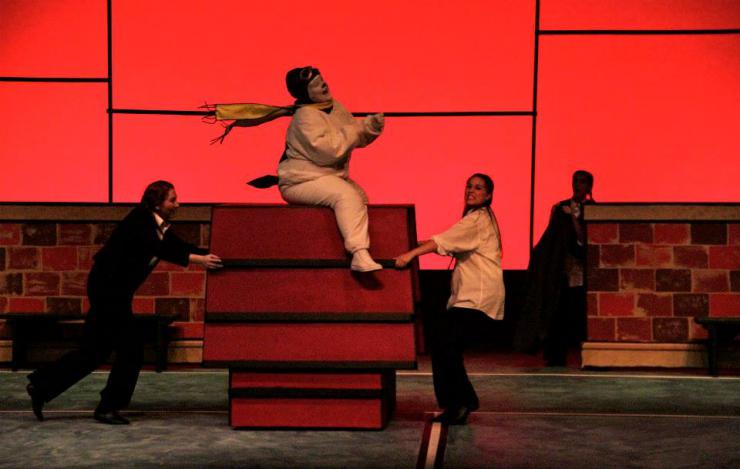

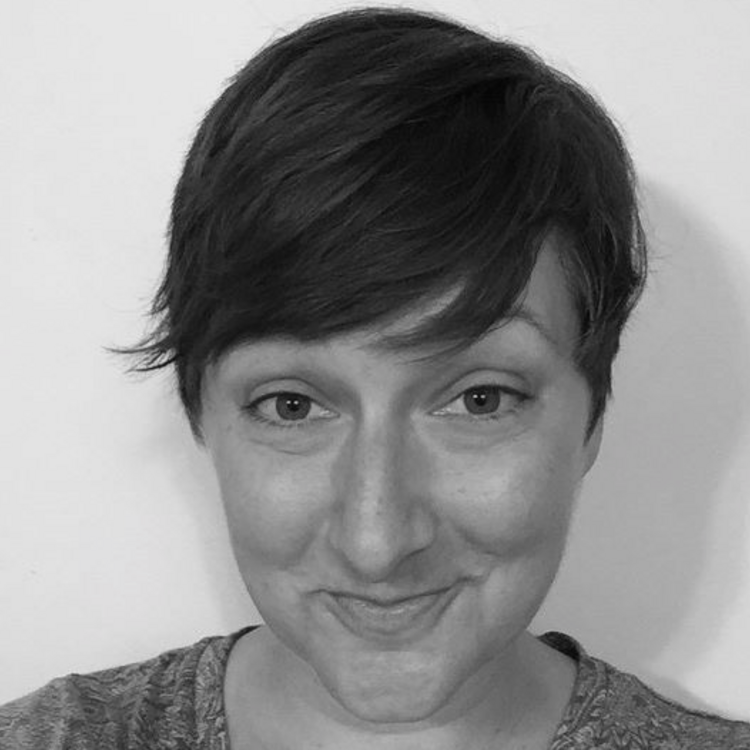
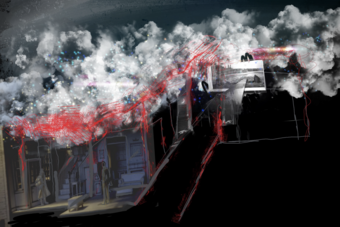




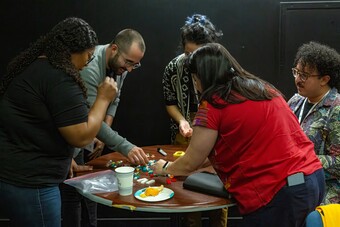

Comments
The article is just the start of the conversation—we want to know what you think about this subject, too! HowlRound is a space for knowledge-sharing, and we welcome spirited, thoughtful, and on-topic dialogue. Find our full comments policy here